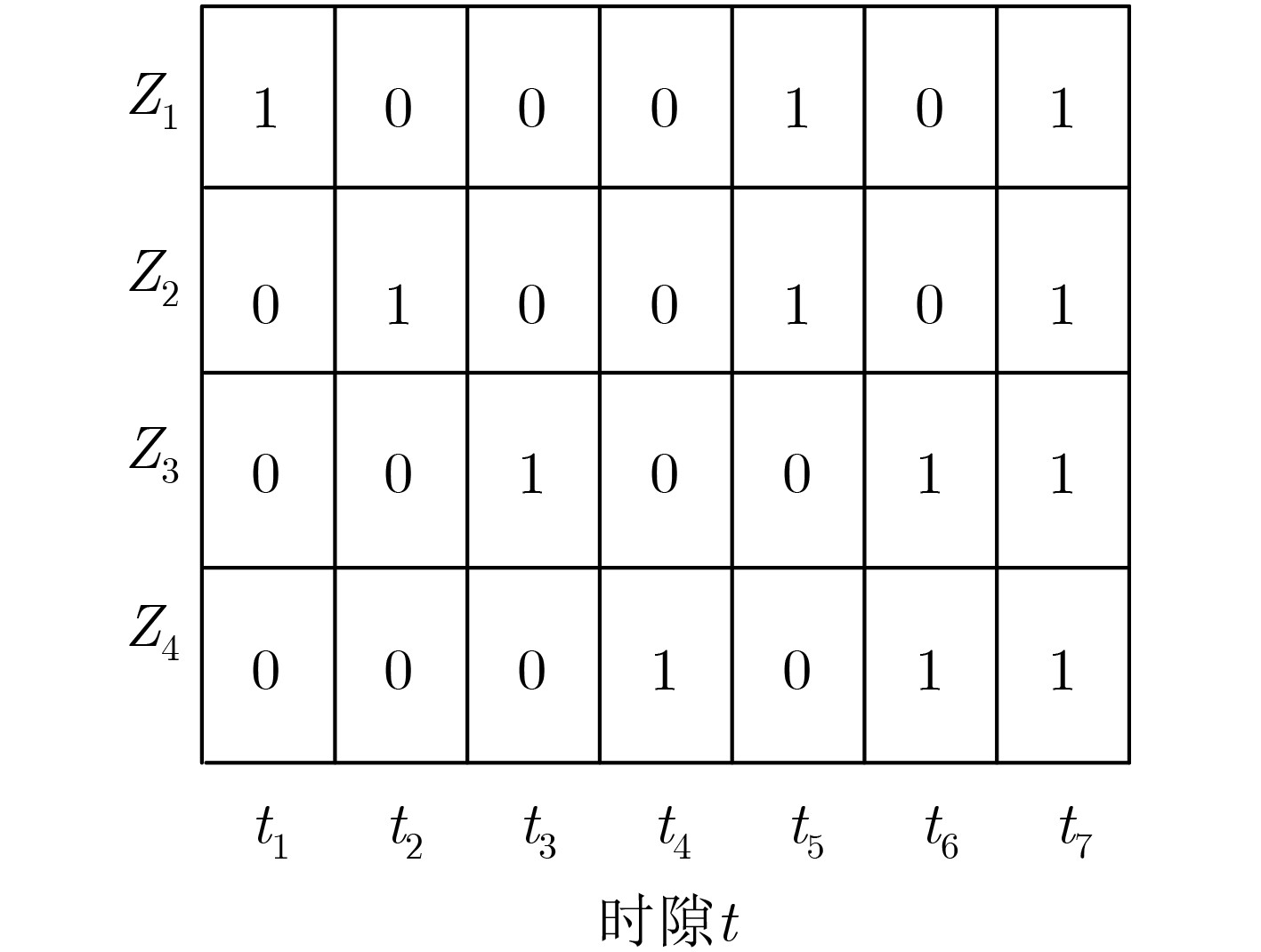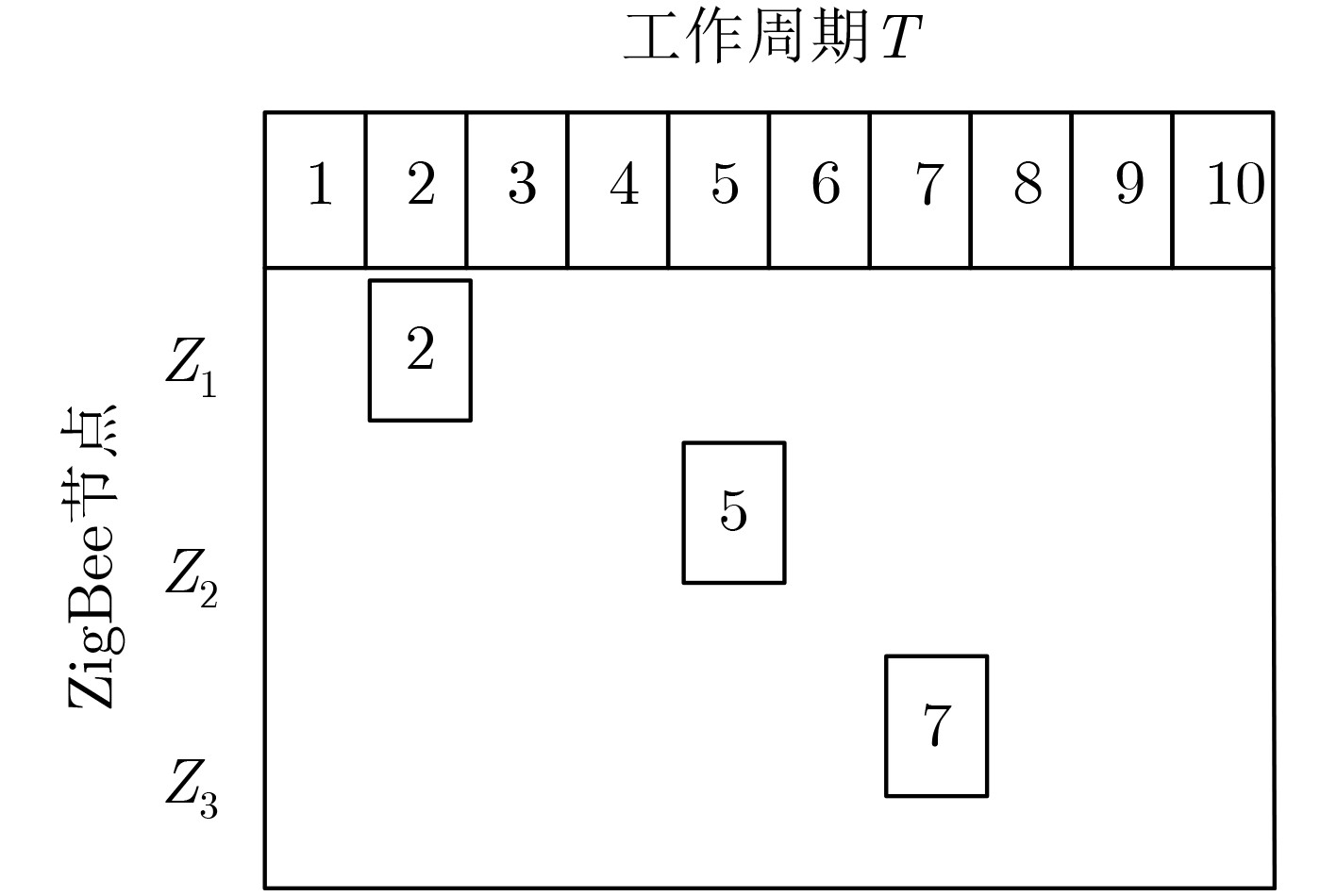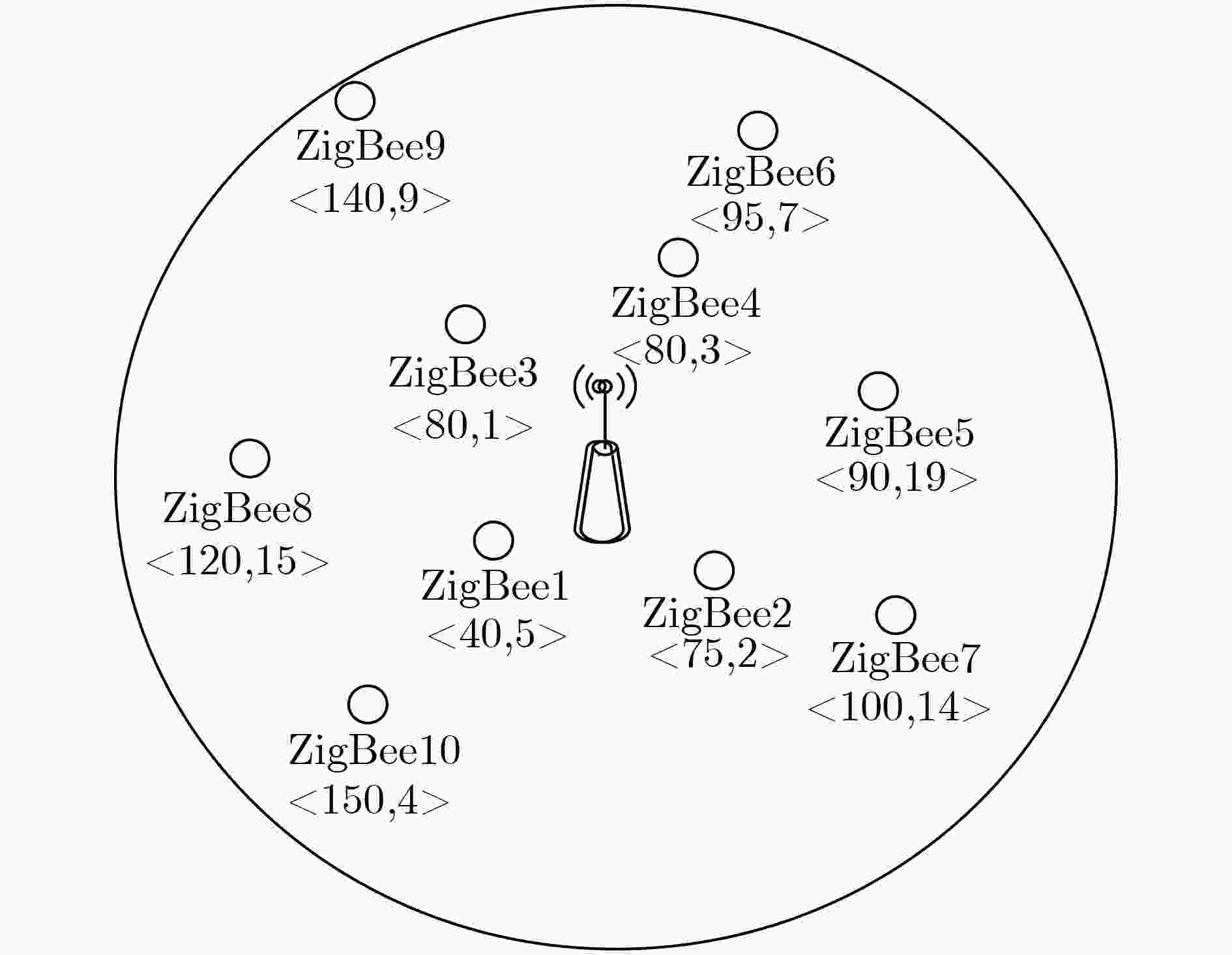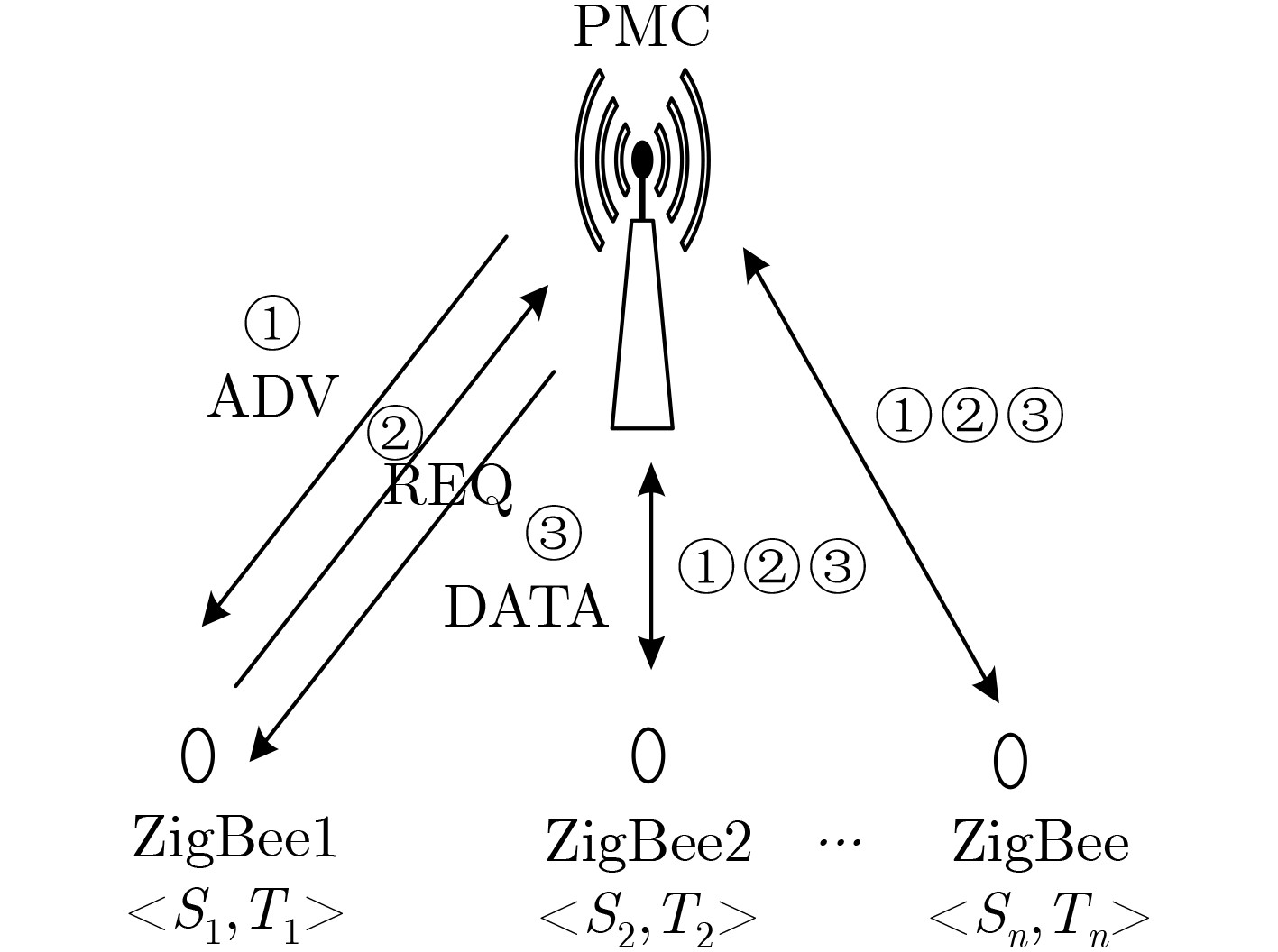A Method of Multi Protocol Data Distribution in Heterogeneous Network
-
摘要: 跨技术通信迅猛发展推动着单一网络向异构无线网络的转变,该转变极大地提高异构无线设备(如Wi-Fi和ZigBee)的高效共存和协作,但也给异构无线网络中的数据分发问题带来了挑战。由于异构网络节点通信范围差异和低占空比节点周期性睡眠的特点,传统数据分发方法不能高效地利用信道资源而导致较低的分发效率。为了解决这些问题,该文提出一种适用于异构网络的并行数据分发方法。通过数据分发时延和能耗定义新的系统损失函数,并证明了损失函数的合理性,利用信标控制的延迟接收数据包的分发策略,从而实现对周期性睡眠的ZigBee网络进行高效数据分发。进一步地,该文根据动态规划的思想,推导出系统的整体能量损耗和时延的最优值。通过仿真实验证明,在考虑时延和能量损耗的前提下,该文的数据分发方法的性能优于传统的数据分发方法。Abstract: The rapid development of cross technology communication promotes the transformation from single network to heterogeneous wireless network, which greatly improves the efficient coexistence and collaboration of heterogeneous wireless devices, but also brings challenges to data distribution in heterogeneous wireless networks. Traditional data distribution schemes are limited by the communication range of a single node and conflict between different network devices, resulting in continuous decline in the efficiency of data distribution. At the same time, they are not suitable for the unique network model of heterogeneous networks. In order to solve these problems, a data distribution method based on multi protocol parallel data transmission in heterogeneous wireless networks is proposed. The key idea is to use the Parallel Multi-protocol Communication (PMC) node as the transmitting node of the ZigBee network, and define a new system COST function to measure the delay and energy penalty of the system. Through adaptive adjustment of the trade-off coefficient in the function, it can depict the data transmission of various requirements. Based on the system COST function, the paper propose a distribution strategy of delayed receiving packets using beacon control that allows ZigBee to choose the appropriate timing to receive data in a heterogeneous network. Furthermore, the paper proves the rationality of the COST function, and then derives the optimal values of the overall energy penalty and time delay of the system based on the idea of dynamic programming. Comprehensive evaluation shows that considering the two design requirements of time delay and energy penalty, the performance of this method is better than traditional data distribution methods.
-
Key words:
- Heterogeneous network /
- Raptor code /
- Data distribution /
- Dynamic programming
-
表 1 模型求解算法
输入:$Z = \{ {Z_1},{Z_2},{Z_3}, ··· ,{Z_N}\} $, $n$ 输出:${\rm{COST}}$, $I$, $D$ (1) While($Z \ne \varnothing $) (2) 初始化${\rm{COS}}{{\rm{T}}_{{\rm{TMP}}}} = + \infty $,设置$n$为PMC发送的包数 (3) 计算$Z_i^t(v) \times Z_i^U$,并对${\varDelta _{ {\rm{delay} } } }$进行排序 (4) for $i$ in 1 to $N$ (5) for $j$ in 1 to $N - 1$ (6) ${I_{{\rm{tmp}}}} = I \cup \{ {I_j}\;{\rm{to}}\;{I_{\min (N - 1,j + 1)}}\} $ (7) 根据损失代价函数计算COST (8) If ${\rm{COST}} < {\rm{COS}}{{\rm{T}}_{{\rm{TMP}}}}$ (9) ${\rm{COS}}{{\rm{T}}_{{\rm{TMP}}}} = {\rm{COST}}$ $I = I \cup \{ {I_j}\;{\rm{to}}\;{I_{j - i - 1}}\} $ (10) end if (11) end for (12) end for (13) $D = Z - I$ (14) 计算$Z_i^R = Z_i^P + n$ (15) for $i$ in 1 to length of $Z$ (16) If $Z_i^P \ge Z_i^R$ (17) $Z = Z - \{ {Z_i}\} $ (18) end if (19) end for (20) end while -
[1] Inc Gartner. Gartner Report[EB/OL]. http://cloudtimes.org/2013/12/20/gartner-theinternet-of-things-will-grow-30-times-to-26-billion-by-2020/, 2016. [2] LI Zhijun and HE Tian. WEBee: Physical-layer cross-technology communication via emulation[C]. The 23rd Annual International Conference on Mobile Computing and Networking, New York, USA, 2017: 2–14. [3] CHI Zicheng, LI Yan, YAO Yao, et al. PMC: Parallel multi-protocol communication to heterogeneous IoT radios within a single WiFi channel[C]. 2017 IEEE 25th International Conference on Network Protocols (ICNP), Toronto, Canada, 2017: 1–1. [4] CROW B P, WIDJAJA I, KIM L G, et al. IEEE 802.11 wireless local area networks[J]. IEEE Communications Magazine, 1997, 35(9): 116–126. doi: 10.1109/35.620533 [5] CALLAWAY E, GORDAY P, HESTER L, et al. Home networking with IEEE 802.15. 4: A developing standard for low-rate wireless personal area networks[J]. IEEE Communications Magazine, 2002, 40(8): 70–77. doi: 10.1109/mcom.2002.1024418 [6] ZHANG Xinyu and SHIN K G. Gap Sense: Lightweight coordination of heterogeneous wireless devices[C]. 2013 Proceedings IEEE INFOCOM, Turin, Italy, 2013: 3094–3101. [7] CHEBROLU K and DHEKNE A. Esense: Communication through energy sensing[C]. The 15th Annual International Conference on Mobile Computing and Networking, New York, USA, 2009: 85–96. [8] ZHANG Yifan and LI Qun. HoWiES: A holistic approach to ZigBee assisted WiFi energy savings in mobile devices[C]. 2013 Proceedings IEEE INFOCOM, Turin, Italy, 2013: 1366–1374. [9] CHI Zicheng, LI Yan, SUN Hongyu, et al. B2W2: N-way concurrent communication for IoT devices[C]. The 14th ACM Conference on Embedded Network Sensor Systems CD-ROM, New York, USA, 2016: 245–258. [10] KIM S M and HE Tian. FreeBee: Cross-technology communication via free side-channel[C]. The 21st Annual International Conference on Mobile Computing and Networking, New York, USA, 2015: 317–330. [11] CHI Zicheng, HUANG Zhichuan, YAO Yao, et al. EMF: Embedding multiple flows of information in existing traffic for concurrent communication among heterogeneous IoT devices[C]. The IEEE INFOCOM 2017 - IEEE Conference on Computer Communications, Atlanta, USA, 2017: 1–9. [12] LIU Jianhang, WANG Shuqing, LI Shibao, et al. MCTS: Multi-channel transmission simultaneously using non-feedback fountain code[J]. IEEE Access, 2018, 6: 58373–58382. doi: 10.1109/ACCESS.2018.2874261 [13] 马彬, 王梦雪, 谢显中. 超密集异构无线网络中基于位置预测的切换算法[J]. 电子与信息学报, 2020, 42(12): 2899–2907. doi: 10.11999/JEIT190751MA Bin, WANG Mengxue, XIE Xianzhong. Handoff algorithm based on location prediction in ultra-dense heterogeneous wireless network[J]. Journal of Electronics &Information Technology, 2020, 42(12): 2899–2907. doi: 10.11999/JEIT190751 [14] ZHANG Rongrong, MOUNGLA H, YU Jihong, et al. Multi-channel broadcast in asymmetric duty cycling wireless body area networks[C]. 2017 IEEE International Conference on Communications, Paris, France, 2017: 1–6. [15] LE D T, LE DUC T, ZALYUBOVSKIY V V, et al. Collision-tolerant broadcast scheduling in duty-cycled wireless sensor networks[J]. Journal of Parallel and Distributed Computing, 2017, 100: 42–56. doi: 10.1016/j.jpdc.2016.10.006 [16] JIANG Chan, LI Taoshen, LIANG Junbin, et al. Low-latency and energy-efficient data preservation mechanism in low-duty-cycle sensor networks[J]. Sensors, 2017, 17(5): 1051. doi: 10.3390/s17051051 [17] 李兴锋, 张新常, 杨美红, 等. 基于SPIN的模块化模型检测方法研究[J]. 电子与信息学报, 2011, 33(4): 902–907. doi: 10.3724/SP.J.1146.2010.0075117051LI Xingfeng, ZHANG Xinchang, YANG Meihong, et al. Study on modularized model checking method based on SPIN[J]. Journal of Electronics &Information Technology, 2011, 33(4): 902–907. doi: 10.3724/SP.J.1146.2010.0075117051 -






 下载:
下载:









 下载:
下载:
